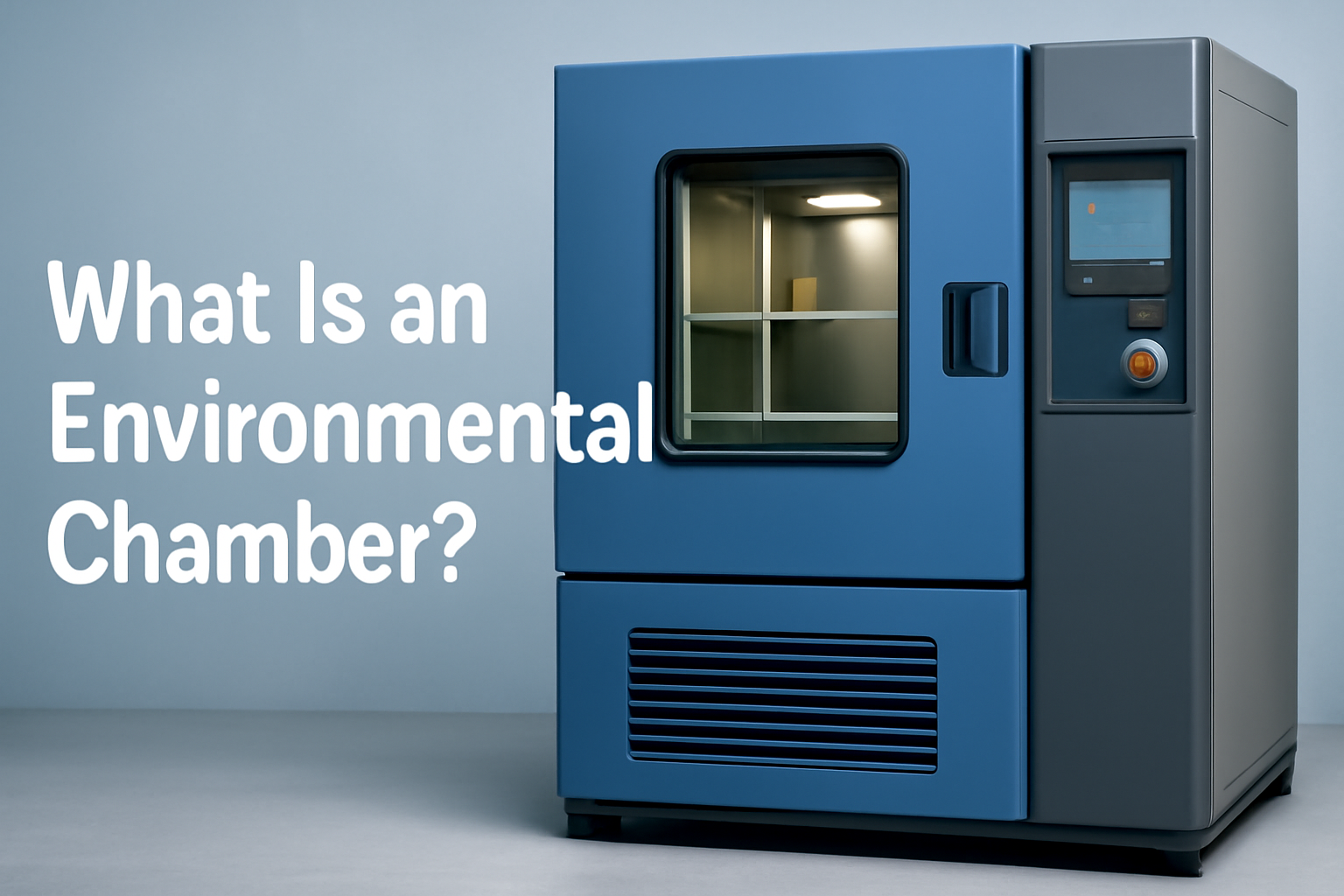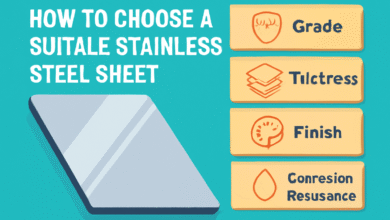What Is an Environmental Chamber?

No one negotiates reliability and durability in the world of product development. The businesses within any given industry have to make sure that their products are capable of functioning under the most diverse environmental conditions: whether we are talking about high temperatures or high humidity, sudden changes in pressure even a corrosive atmosphere. That is when environmental chambers come in.
Special-purpose testing rooms that specifically replicate the specified environmental conditions are called environmental chambers. These chambers assist manufacturers in assessing the behaviour of products as time goes by in a controlled environment by recreating the real-life stressors. Environmental chambers are essential to your quality, safety, and regulatory compliance when testing electronic components, medical devices, automotive items, or structural (building) materials.
What Is an Environmental Chamber?
An environmental chamber (also referred to as a climatic or climate test chamber) is the test enclosure that is used to subject the products or materials to controlled environmental conditions. Such circumstances normally comprise:
- Temperature (hot or cold)
- Humidity (dry or damp)
- Altitude and pressure variations
- UV light or solar radiation
- Vibration and mechanical shock
- Corrosive atmospheres (e.g., salt spray)
An environmental chamber can be used to find out the performance or degradation pattern of the product under varying circumstances. Such a stress test can assist manufacturers in diagnosing the weakness of the design, determining how long the products may last, a nd ensure they can meet international standards,e.g., ISO, ASTM, and IEC.
Types of Environmental Chambers
There are many types of environmental chambers designed for specific testing needs:
- Temperature and Humidity Chambers
These are rooms that resemble hot, cold, dry, and humid conditions. Their applications are widespread in electronics, automobiles, pharmaceutical industry. - Thermal Shock Chambers
These inflict extreme hot and cold temperatures in quick succession, testing how suitable a product is to extreme changes in the environment. - Altitude Chambers
Commonly employed during aerospace testing but recreate high-altitude low-pressure conditions, these have an ambiance that is inversely proportionate to the altitude. - Salt Spray Chambers
These corrosion corrosion resistance by exposing materials are exposed to a sea-laden environment, which is representative of marine or coastal conditions. - Vibration Test Chambers
These are a combination of environmental tests and mechanical stress tests, which involve the introduction of vibration on exposure to temperature or humidity. - Gas Emission Chambers
These are employed to test to off-gassing of volatile chemicals out of materials, as formaldehyde out of building products or furniture.
One particular example of such a type is the Formaldehyde Emission Test Chamber that can be used to assess the level of the release of formaldehyde using materials used in building, like plywood, ppandanor textiles, in a controlled condition. This is more applicable when it comes to the air quality indoors and the regulation of the air in terms of health and safety.
Applications of Environmental Chambers
The number of industries in which environmental chambers are applied is close to zero because products in almost all of them need to adhere to a certain level of durability and performance. The popular uses are:
- Electronics: Testing of circuit boards, batteries, and devices concerning heat resistance and resistance to the ingress of moisture.
- Automotive: The validation of components like sensors, seals, and components of engines in different climatic conditions.
- Aerospace: Aircraft part simulation and low/high altitude and extreme temperature environments.
- Pharmaceuticals: Determination of shelf life and drug stability with varying conditions of storage.
- Construction and Materials: Testing of the performance of paint, coating, and building materials due to weather-related stress factors.
OTS Technik Environmental Chambers: Precision and Reliability
In choosing an environmental chamber, quality and precision are necessary. OTS Technik Environmental Chambers have gained a broad reputation for innovative design, high-quality manufacturing, and accuracy of environmental parameters control. The chambers can be used for a variety of applications, everything from simple temperature testing to more specialized stress simulations.
OTS Technik offers a comprehensive line of chambers, including:
- Temperature and humidity chambers
- Thermal shock chambers
- Salt spray and corrosion test chambers
- Custom-built chambers for industry-specific requirements
Data logging and programmable controls allow OTS Technik products to be used and gain consistent, repeatable results with accurate real-time measurements. As a lab technician, quality control manager, or product engineer, your products are being developed with the most rigid quality criteria in mind, and a reliable testing partner such as XRF Analyzer can guarantee that the products are of the highest level of quality.
Formaldehyde Emission Test Chambers: Protecting Indoor Air Quality
The quality of the air inside indoor premises has become an emerging issue in both residential, commercial, and industrial settings. Formaldehyde, a typical volatile organic compound (VOC) in furniture, adhesives, and composite wood products, can cause severe damage to health when long-term exposure is involved.
A Formaldehyde Emission Test Chamber is applied in determining the amount of formaldehyde a specific product will emit at particular temperature and humidity levels. These rooms are necessary in:
- Complying with safety regulations (e.g., EPA TSCA Title VI, CARB Phase 2)
- Meeting green building certifications (e.g., LEED)
- Ensuring consumer safety and reducing liability
Managing the temperature, humidity, and airflow, the chamber fairly reproduces real-life conditions and helps the manufacturer check whether the products are safe to be in indoor places.
Benefits of Using Environmental Chambers
- Product Reliability: Identify weaknesses before products reach the market.
- Regulatory Compliance: Meet international standards and legal requirements.
- Accelerated Life Testing: Simulate years of wear and environmental exposure in a matter of weeks or months.
- Innovation Support: Validate new materials or designs quickly and accurately.
- Risk Mitigation: Reduce product recalls and failures by identifying issues early.
Conclusion
An environmental chamber is a powerful device in the contemporary process of manufacturing and product development. Whether to ascertain that a mobile phone can last a summer in the desert or that the furniture is within the standards required of indoor air safety, these chambers do play a vital role in safeguarding both goods and the consumer.
In companies in need of superior products, OTS Technik Environmental Chambers are a precise and reliable holding and testing facility. When it is about indoor air quality, then the use of a Formaldehyde Emission Test Chamber allows making sure that your products are not only satisfactory but also safe to be used on a daily basis.
In whatever field you are in, whether the aerospace, electronics industry, construction industry, or even in healthcare, it is never a bad idea to invest in good environmental testing equipment so that you can produce a much better and safer, and longer-lasting product.



